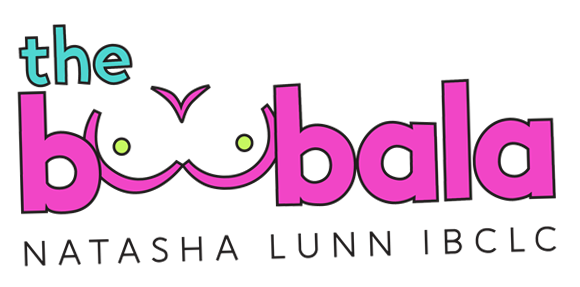Page Content
- What tier does Adderall fall under?
- What category does Adderall fall under?
- What category is Adderall in breastfeeding?
- Is Adderall safe for breastfeeding?
- What are the L1 and L2 drugs?
- What are Category D drugs in pregnancy?
- What is L3 lactation risk category?
- Is Adderall a category C drug?
- What are the lactation drug risk categories?
- What breastfeeding category is Adderall?
Understanding the Lactation Risk Category of Adderall
Adderall, a medication commonly prescribed for attention deficit hyperactivity disorder (ADHD) and narcolepsy, raises important questions regarding its safety for breastfeeding mothers. The lactation risk category assigned to Adderall is crucial for healthcare providers and nursing mothers to consider when making informed decisions about medication use during lactation.
Lactation Risk Category Classification
According to the classification system developed by Dr. Thomas Hale, Adderall is categorized as L3: Moderately Safe for breastfeeding mothers. This classification indicates that while there are no controlled studies demonstrating significant risks to breastfed infants, the data available is limited. The L3 category suggests that the medication may pose some risk, but it is generally considered acceptable when the benefits outweigh potential harms.
Research and Recommendations
The research surrounding Adderall’s effects on breastfeeding is not extensive. Current findings suggest that while the transfer of amphetamines into breast milk occurs, the levels are typically low. This means that the potential exposure for infants is minimized. However, healthcare providers often recommend caution, particularly because the long-term effects on breastfed infants remain largely unstudied.
Experts advise that mothers taking Adderall should consult with their healthcare providers to discuss individual circumstances, including dosage and the specific needs of both the mother and the child. This personalized approach ensures that any potential risks are carefully weighed against the necessity of the medication for the mother’s health.
Potential Effects on Lactation
While Adderall is not shown to significantly affect milk production in most cases, there are concerns that high dosages might interfere with lactation, especially in mothers who are still establishing their milk supply. Therefore, monitoring and adjusting the dosage under medical supervision is essential for breastfeeding mothers who require this medication.
Conclusion
In summary, Adderall is classified as L3 in the lactation risk category, indicating it is moderately safe for breastfeeding mothers. While the available research does not show significant adverse effects on breastfed infants, the lack of comprehensive studies necessitates a cautious approach. Mothers should engage in open discussions with their healthcare providers to ensure that their treatment plan is safe for both themselves and their infants.
What tier does Adderall fall under?
tier 2
Only 1 brand-name drug, Adderall, was assigned tier 2 status at the same time as the 3-tier formulary implementation, and this drug had a generic version available in tier 1.
What category does Adderall fall under?
Adderall is a prescription medication that contains two drugs: amphetamine and dextroamphetamine. It belongs to a class of medications called stimulants. It’s most commonly used to treat attention deficit hyperactivity disorder (ADHD). It’s also used to treat narcolepsy.
What category is Adderall in breastfeeding?
For nursing, ADHD medications are classified as L3: Moderately Safe. This classification indicates that “There are no controlled studies in breastfeeding women, however the risk of untoward effects to a breastfed infant is possible.
Is Adderall safe for breastfeeding?
There are no known negative effects on nursing babies when their parent takes less than 45 mg/day Adderall® (amphetamine) or 80 mg/day Ritalin® (methylphenidate). You can feed your baby infant formula, donor milk, or milk you pumped before taking stimulants.
What are the L1 and L2 drugs?
Each drug included in this reference is assigned a category from the following: L1- Safest; L2- Safer; L3-Moderately Safe; L4- Possibly Hazardous; and L5- Contraindicated (Table 7: Examples 1 and 3). Drug monographs summarize specific findings related to that medication and breast milk.
What are Category D drugs in pregnancy?
Category D:
Drugs in this class may be used in pregnancy if the benefits to the mother outweigh the risk to the fetus (i.e. a life threatening situation or a serious disease for which safer medication cannot be used or are not efficacious). Examples of medications in this class are phenytoin and valproic acid.
What is L3 lactation risk category?
Lactation Risk Categories Explained
They have given each medication a rating from Safest (L1) to Hazardous (L5). L3 Probably Safe: No studies, but expert opinion suggesting safety. Risk to the infant is possible, and further evaluation must be taken to consider individual situations.
Is Adderall a category C drug?
“Since Adderall is a category C medication, it can be used prior to getting pregnant only if the benefits to the mom outweigh the risks to the baby.”
What are the lactation drug risk categories?
- L1. Safest. Drug which has been taken by a large number of breastfeeding moth- ers without any observed increase in adverse effects in the infant.
- L2. Safer.
- L3. Moderately Safe.
- L4. Possibly Hazardous.
- L5. Contraindicated.
- Category. Acetaminophen (Tylenol)
- Acceptable. Cetrizine (Zyrtec)
What breastfeeding category is Adderall?
For nursing, ADHD medications are classified as L3: Moderately Safe. This classification indicates that “There are no controlled studies in breastfeeding women, however the risk of untoward effects to a breastfed infant is possible.

